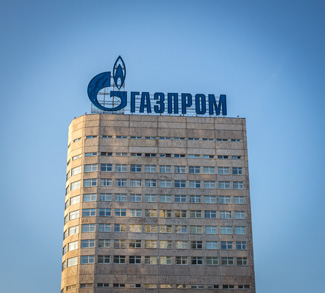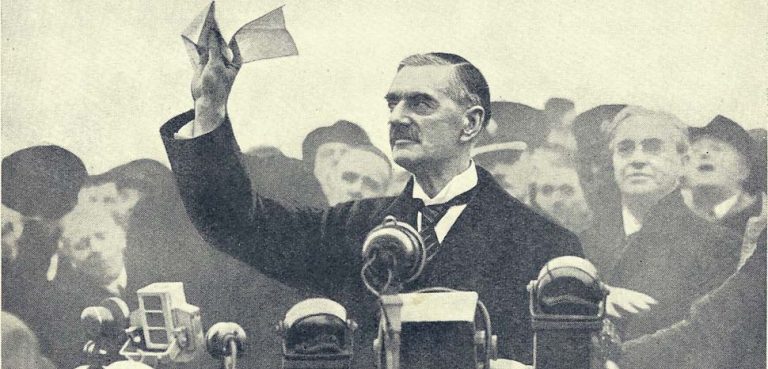The GIUK Gap—stretching between Greenland, Iceland, and the United Kingdom—has long been a critical maritime chokepoint. Throughout the 20th century, it shaped naval strategy, from protecting Allied supply lines in both World Wars to serving as a frontline in Cold War anti-submarine warfare. Control over this passage determined military advantage in the North Atlantic, influencing power projection and transatlantic defense. Though its significance waned following the Cold War, the GIUK Gap is taking on new relevance amid mounting Russian naval activity, Arctic expansion, and emerging hybrid threats, making it once again a maritime chokepoint of strategic note.
The GIUK Gap in the 20th Century
The GIUK Gap is a strategically significant maritime passage located between Greenland, Iceland, and the United Kingdom. Serving as a central chokepoint in the North Atlantic Ocean, it connects the Arctic Ocean to the Atlantic and facilitates movement between North America and Europe, making it a constant focus for naval strategists.
This strategic importance was especially evident during the World Wars, when control of the GIUK Gap was essential for safeguarding transatlantic supply routes, the lifelines of the Allied war effort. In World War II, recognizing the Gap’s vulnerability, Allied forces occupied Iceland and Greenland to establish monitoring and defense positions. These bases played a pivotal role in countering German U-boats and surface ships that sought to disrupt vital shipping lanes. The high stakes of controlling the GIUK Gap was underscored by events like the Battle of the Denmark Strait, where the German battleship Bismarck exploited the passage to break out into the Atlantic.
Control over the gap not only ensured the flow of critical supplies but also served as a means of projecting power. The occupation of strategic locations like Iceland enabled Allied forces to maintain dominance over key maritime routes, illustrating how geography directly influences the outcomes of major inter-state conflicts.
The GIUK Gap’s importance grew further during the Cold War, becoming a frontline in NATO’s defense strategy. It was a chokepoint for detecting Soviet submarines attempting to access the Atlantic from bases on the Kola Peninsula. NATO deployed the Sound Surveillance System (SOSUS) and maritime patrol aircraft like the P-3 Orion to maintain an edge in anti-submarine warfare (ASW). The SOSUS network, an underwater array of hydrophones, provided early warning of Soviet submarine movements, significantly enhancing NATO’s surveillance capabilities.
Even as Soviet missile technology improved, enabling ballistic missile submarines to operate from Arctic bastions, the GIUK Gap remained crucial for tracking attack submarines that could threaten NATO’s transatlantic reinforcement routes. This underscored the gap’s dual role as both a barrier and a gateway—a strategic chokepoint where control determined advantage.
After the Soviet Union’s collapse, the perceived naval threat diminished, leading NATO to shift its focus. The alliance turned to expeditionary operations in places like the Balkans, the Middle East, and Africa. The pivot resulted in reduced investments in ASW capabilities, with cuts to frigates, maritime patrol aircraft, and submarine fleets. The shift also led to a decline in operator skills as NATO prioritized out-of-area missions over traditional territorial defense.
Russia’s Strategic Interest in the GIUK Gap
Historically, the frozen Arctic has served as a natural barrier, shielding Russia from naval threats. However, as the ice recedes due to climate change, this natural defense is weakening, reshaping Arctic geopolitics and presenting opportunities and risks for Moscow.
A melting Arctic expands Russia’s operational theater, enabling greater naval maneuverability and more direct access to the North Atlantic via the GIUK Gap. This would allow Russian naval forces to bypass traditional chokepoints, such as the Øresund, complicating NATO’s tracking and containment efforts.
However, the melting Arctic does not solely advance Russian ambitions—it also increases Russia’s vulnerability. NATO can leverage its control of the GIUK Gap and greater access to Arctic waters to enhance surveillance of Russian naval movements, deploy forces in previously restricted areas, and more effectively challenge Russia’s bastion defense strategy in the Barents Sea. This shift compels Russia to strengthen its northern military infrastructure and enhance its A2/AD (Anti-Access/Area Denial) capabilities, with submarines playing a pivotal role.
Indeed, Russia has intensified its Arctic militarization in recent years—not only as a defensive measure but also as part of a long-term strategy to secure control over polar shipping lanes, energy resources, and military access points. The effort has included the reopening of Soviet-era bases, the deployment of advanced S-400 air defense systems, and regular naval exercises with strategic partners in high latitudes.
Renewed Russian Naval Activity
The 2010s saw a notable resurgence in Russian naval capabilities, driven by significant investments in modernizing the Northern Fleet. As the largest and most strategically important of Russia’s naval fleets, the Northern Fleet primarily operates from the Kola Peninsula, a region that provides year-round ice-free access to the North Atlantic via the GIUK Gap. Both the Peninsula and the Barents Sea serve as critical launching points for Russia’s advanced submarine fleet, a cornerstone of its deterrence strategy.
The introduction of the Yasen- and Borei-class submarines highlights Russia’s commitment to regaining maritime superiority. These submarines are equipped with cutting-edge stealth technologies, allowing them to evade traditional detection systems, and advanced weaponry, such as Kalibr cruise missiles and Zircon hypersonic missiles. With their extended range and precision, these platforms could target NATO assets and infrastructure from considerable distances. Furthermore, the increasing frequency of Russian submarine patrols around the GIUK Gap—now at levels unseen since the Cold War—underscores the Kremlin’s intent to challenge NATO’s maritime dominance in the region.
This renewed activity aligns with Russia’s broader strategic goals, namely securing natural resources and asserting influence in the North Atlantic. Moreover, as global warming continues to open new trade routes across the Arctic, Russia’s strategic focus on maintaining a strong presence in the GIUK Gap—one of the two key gateways to its Northern Sea Route (NSR)—is increasingly apparent.
Hybrid Warfare and Undersea Infrastructure
In addition to traditional naval operations, Russia’s focus on hybrid warfare introduces new challenges for NATO. Specialized vessels, such as the Yantar, are equipped with advanced surveillance technologies and remotely operated underwater vehicles capable of accessing or disrupting undersea infrastructure. These capabilities pose a direct threat to the security of critical assets, including undersea communication cables that carry over 95% of global internet traffic and facilitate international financial transactions.
Sabotage of these undersea cables brings far-reaching implications, from crippling government communications to destabilizing financial markets. Similarly, attacks on offshore energy infrastructure, such as wind farms and pipelines, could undermine the economic stability of NATO member states. Given this strategic context, the increased visibility of Russian vessels near key infrastructure has heightened concerns, prompting NATO to reassess its defensive posture.
By integrating traditional military strategies with hybrid tactics, Russia demonstrates its ability to exploit vulnerabilities in the interconnected global economy. This highlights the perceived urgency of strengthening NATO’s surveillance and defensive capabilities in the GIUK Gap, as it serves as the Northern Fleet’s primary route to the Atlantic.
NATO’s Anti-submarine Warfare (ASW) Revival
In response to the growing challenges posed by Russian submarine activity in the North Atlantic, NATO has made significant strides in revitalizing its ASW capabilities. This renewed focus comes after years of neglect following the Cold War, which saw reductions in maritime patrol aircraft (MPA), ASW frigates, and submarine fleets across multiple NATO nations. Recognizing the increasing threat, NATO members have committed substantial resources to modernizing equipment, expanding joint exercises, and integrating emerging technologies into ASW operations.
One of the most crucial components of NATO’s ASW resurgence is the deployment of advanced maritime patrol aircraft. The P-8 Poseidon, operated by the United States, the United Kingdom, Norway, and other allied nations, has become a cornerstone of NATO’s ASW operations. These aircraft are equipped with state-of-the-art sonar buoys, magnetic anomaly detectors, and torpedoes, enabling them to track and engage stealthy Russian submarines. The increasing number of P-8s deployed in Iceland, a key monitoring station for the GIUK Gap, demonstrates NATO’s commitment to solidifying its control over the region.
In addition to new aircraft, NATO has invested in unmanned maritime systems (UMS) to enhance underwater surveillance. Autonomous underwater drones, such as the US Navy’s Orca Extra Large Unmanned Underwater Vehicle (XLUUV), are being developed to conduct persistent surveillance of the GIUK Gap, operating in areas where traditional manned platforms may be unable to sustain prolonged operations. These unmanned platforms allow for continuous monitoring, reducing the burden on manned assets and improving NATO’s ability to track Russian submarine movements in real time.
NATO’s reinvestment in ASW has also focused on rebuilding joint operational capabilities through large-scale military exercises. Exercises like “Dynamic Mongoose” and “Northern Viking” have provided essential training opportunities for naval forces to refine their ASW tactics in the challenging waters of the North Atlantic. These exercises involve coordinated operations between submarines, surface ships, and MPAs, ensuring that NATO forces can effectively detect, track, and engage potential threats.
To enhance interoperability, NATO has developed standardized ASW tactics and procedures that allow member nations to operate seamlessly. This includes real-time intelligence-sharing systems that enable rapid coordination between NATO command centers and deployed naval assets. Advances in data fusion technology have also allowed for a more comprehensive understanding of Russian submarine movements, reducing the risk of potential incursions through the GIUK Gap.
Strategic Implications
The GIUK Gap remains a linchpin of NATO’s defense architecture, functioning as a critical maritime chokepoint for detecting and deterring adversarial naval activity. While advancements in Russian long-range strike capabilities have reduced the necessity for submarines to transit the gap for direct attacks, its strategic relevance endures. As a natural bottleneck, it offers NATO forces a prime vantage point for tracking both surface and subsurface movements, ensuring secure transatlantic reinforcement corridors in times of crisis.
The potential disruption of these maritime routes—whether through submarine interdiction, hybrid warfare, or cyber-enabled threats to naval logistics—poses a direct challenge to NATO’s ability to project power and reinforce its European allies in time-sensitive scenarios. Recognizing these risks, NATO has prioritized maritime domain awareness and force projection in the North Atlantic. The reactivation of the US 2nd Fleet and the establishment of NATO’s Joint Force Command Norfolk signal a renewed commitment to securing transatlantic sea lines of communication (SLOCs) against emerging threats.
As great-power competition sharpens in the maritime domain, the GIUK Gap remains a geostrategic fulcrum, where NATO’s ability to maintain deterrence and maritime superiority will shape the future balance of power in the North Atlantic and beyond.




